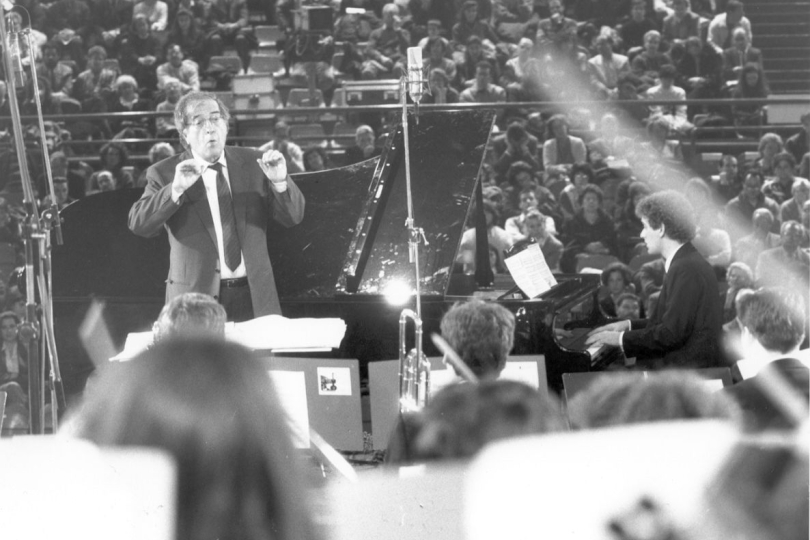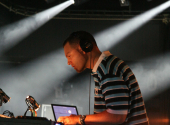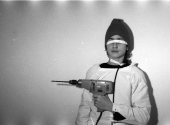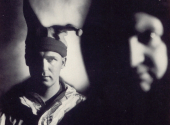
Milestones in Music History #31: Luciano Berio, the One Who Started It All
As we saw in our last episode, a tipping point for electronic, experimental and avant-garde music was reached with Amnesia Scanner, who were a sort of standard-bearer from the 1980s to 2010s. Today it seems that experimental music has crossed all kinds of barriers and dared more than it was possible to imagine, and we would expect this to be the result of a long and linear process. But that's not exactly the case, indeed, it seems that the history of electronic music has tended to be cyclical. One of the fathers of this process was the Italian composer and electronic music pioneer Luciano Berio.
Are you familiar with the modulation achieved by a low-frequency oscillator? The shape of the sound wave is varied – generally passing from a square to a pulse shape – and the effect obtained appears as continuous, but at the same time circular. It is repetitive but has a longitudinal direction.
Such is electronic music when we look at the more experimental kind, and that world of artists, composers and musicians who have taken big risks, but as a result, obtained a sort of vision of the sound of the future.
Continuing along the technological, cultural and artistic progress, one notices at the same time a sort of cyclicality, which in my opinion depends a little on drawing up attitudes and acquaintances from the past, but also on the desire and ability to dare. This binomial, when balanced in the right way, gave rise to far-sighted and somewhat controversial phenomena in the history of music. But it was precisely these phenomena that changed, once and for all, the flow of things.
And the phenomenon could be defined as Luciano Berio. Born in Oneglia, a former small village in Liguria (northern Italy), Berio approached music early, in the first years of his life. His father and grandfather were both organists, so he started with the piano.
During the Second World War, on his first day in the army, he injured his finger while learning to use a pistol, which would affect his artistic career. On his return from the war Berio enrolled at the Milan Conservatory and was lucky enough to study with masters such as the Italian music critic, teacher, and composer Giulio Cesare Paribeni, and the Italian composer and teacher of composition Giorgio Federico Ghedini - the latter also known for the readaptation of Hermann Melville’s Billy Budd novel.
Unfortunately, the injury to his hand prevented Berio from continuing his piano studies and so he began to devote himself to composing music. In 1947 he made his first public appearance, presenting a piano suite, but soon realised he would have to leave the country if he were to find his way. So, in 1952, he moved to the United States to study at Tanglewood with master Luigi Dallapiccola.
Dallapiccola proved to be a model, and the one who initiated Berio into serialism, i.e., the twelve-tone technique, a method of musical composition introduced by the Austrian composer Josef Matthias Hauer, later developed by Schoenberg and eventually distorted by Aaron Copland and Igor Stravinsky. At the same time, Dallapiccola was inspired by composers such as Wagner and Debussy, as well as the neoclassical compositions of Ferruccio Busoni.
Luciano Berio took these influences with him back to Europe, to Darmstadt, Germany. Here he further enriched his experience by attending the Internationale Ferienkurse für Neue Musik, and by meeting masters of enormous calibre such as György Ligeti, Pierre Boulez, Karlheinz Stockhausen and Mauricio Kagel. And it is thanks to these composers that he fell in love with electronic music.
His interest in the genre grew so exponentially that Berio founded in 1955, together with Italian conductor and composer Bruno Maderna, the Studio di fonologia musicale di Radio Milano. The project was born after the previous successful and similar experiments made in Germany and France, respectively the Studio für Elektronische Musik des WDR in Cologne and the Groupe de Recherches Musicales in Paris.
The intent was to create a forge of experimentation for electronic music, equipped with audio consoles and synthesizers, where artists could indulge themselves. And the studio in fact hosted many musicians, some of which did not go unnoticed, such as John Cage and Henri Pousseur. Luciano Berio also founded and managed an electronic musical periodical, called Incontri Musicali.
Berio's work on electronic music that has come down to us, as well as his most experimental periods, can be traced back to the time he spent in his Studio. In fact, this period produced what has been considered the first electro-acoustic composition in the history of Western music, Thema (Homage to Joyce).
A complex composition that mixed art, music, poetry, and technology; Berio broke Joyce's verses into pieces, deconstructed them, and then recomposed them and merged them into the musical composition. A sublime work, which combined experimentation with voices – either narrating or appearing and disappearing from the texture – with noisy and squeaky sound waves.
But he soon returned to the States, where he taught music and, while working at the Juilliard School, a private performing arts conservatory in New York City, founded the Juilliard Ensemble, a musical group devoted to creating contemporary music performances. This period overseas was quite productive for Berio, who composed in this time the piece Laborintus II.
It was a work commissioned by French television to celebrate the seven-hundredth anniversary of the birth of Dante Alighieri. Composed of music, voices and tape, with the background voice of the Italian poet Edoardo Sanguineti, it earned him the Prix Italia prize in 1966.
But the work that brought him instant fame was Sinfonia, a composition for large orchestra and eight amplified voices, first performed in 1968. The voices, however, consisted of spoken word interspersed with screams, whispers and narrations from works by famous writers, such as Claude Lévi-Strauss' The Raw and the Cooked and Samuel Beckett's The Unnamable, even instructions from the scores of Gustav Mahler.
Later in the same year, Berio also composed a piece named O King in honour of the death of Martin Luther King and included it in his Sinfonia. This production by Berio is particularly focused on the deconstruction of the voice; the combination of voices with different tones and different phases creates a sort of collage that communicates to the listener a feeling of bewilderment, of being lost in the void.
Similar work was done for the composition entitled A-Ronne, a piece again for eight voices, with an optional keyboard part, published in 1974. Here Berio once again made use of the collaboration of the poet Sanguineti, who provided an anthology of literary excerpts from the Bible, Karl Marx and T.S. Eliot.
A third composition, called Coro, published a few years later, in 1977, similar to Sinfonia and A-Ronne, which dealt with many themes of life – love, passion, pain and loss – with South America as a background.
One last very interesting work that is worth mentioning was a project that Berio began already in 1958 and then continued over the years, finally completing it in 2004, centred on the infinite possibilities of different musical instruments.
The series, called Sequenza (the Sequenze ranged from I to XIVb, and there were eighteen in total), dealt with examining a single instrument at a time and then developing the musical discourse on it. The work deserves a wise and prolonged listen, but if you really don't have the time to listen to them all, then I would tell you my favourites. Namely Sequenza II, a composition created for harp without accompaniment, and Sequenza XII, a composition for bassoon, the longest of the suite and in my opinion the most experimentally sophisticated.
Luciano Berio's contribution to electronic music was fundamental, because he created, through daring shapes and tones, with gentle arrogance and subtle irreverence, the forms and structure of what electronic music tout court is. His musical intuition allowed us to cross boundaries that had never been touched before.
Moreover, he allowed us to open our minds to the thousand universes of musical experimentation. He was and always will be a model of inspiration for electronic music and beyond. He certainly inspired one, who could be considered one of the fathers, if not the father of minimalism in music, La Monte Young, the protagonist of our next episode.
How is it possible that Berio sensed the direction of modern electronic music? Would it be possible to replicate a situation like his Studio today? How are music and poetry intertwined? And how many possibilities for experimentation can a single musical instrument give?
Leave us your opinion in the comments below!
If you have found an error or typo in the article, please let us know by e-mail info@insounder.org.





